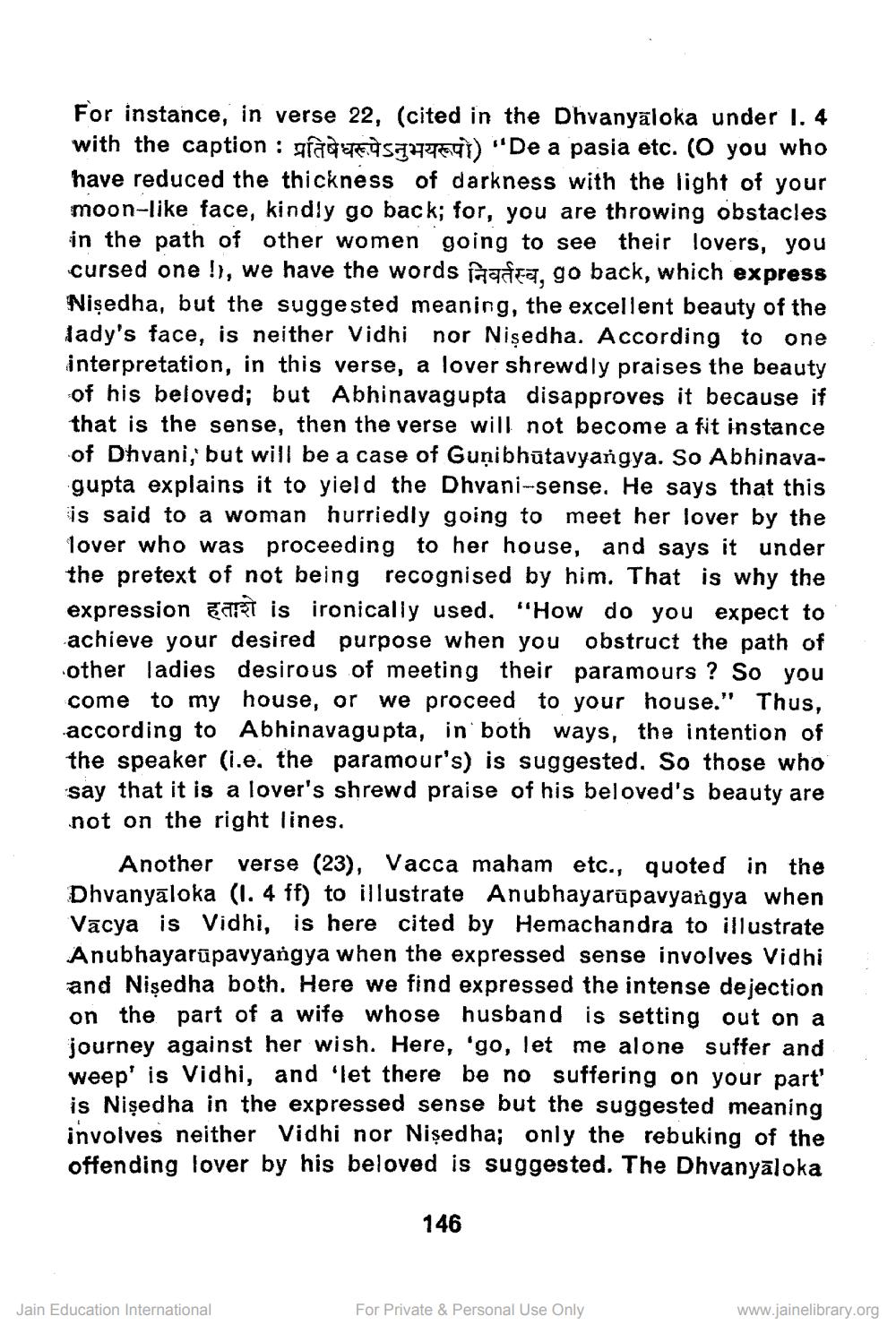________________
For instance, in verse 22, (cited in the Dhvanyaloka under 1. 4 with the caption : gazteos H2401) "De a pasia etc. (O you who have reduced the thickness of darkness with the light of your moon-like face, kindly go back; for, you are throwing obstacles in the path of other women going to see their lovers, you cursed one !), we have the words laadne, go back, which express Nişedha, but the suggested meaning, the excellent beauty of the lady's face, is neither Vidhi nor Nişedha. According to one interpretation, in this verse, a lover shrewdly praises the beauty of his beloved; but Abhinavagupta disapproves it because if that is the sense, then the verse will not become a fit instance of Dhvani, but will be a case of Guņi bhūtavyangya. So Abhinavagupta explains it to yield the Dhvani-sense. He says that this is said to a woman hurriedly going to meet her lover by the lover who was proceeding to her house, and says it under the pretext of not being recognised by him. That is why the expression eart is ironically used, "How do you expect to achieve your desired purpose when you obstruct the path of other ladies desirous of meeting their paramours ? So you come to my house, or we proceed to your house." Thus, according to Abhinavagupta, in both ways, the intention of the speaker (i.e, the paramour's) is suggested. So those who say that it is a lover's shrewd praise of his beloved's beauty are not on the right lines.
Another verse (23), Vacca maham etc., quoted in the Dhvanyaloka (1. 4 ff) to illustrate Anubhayarūpavyangya when Vācya is Vidhi, is here cited by Hemachandra to illustrate Anubhayarūpavyangya when the expressed sense involves Vidhi and Nişedha both. Here we find expressed the intense dejection on the part of a wife whose husband is setting out on a journey against her wish. Here, 'go, let me alone suffer and weep' is Vidhi, and let there be no suffering on your part' is Nişedha in the expressed sense but the suggested meaning involves neither Vidhi nor Nişedha; only the rebuking of the offending lover by his beloved is suggested. The Dhvanyaloka
146
Jain Education International
For Private & Personal Use Only
www.jainelibrary.org




